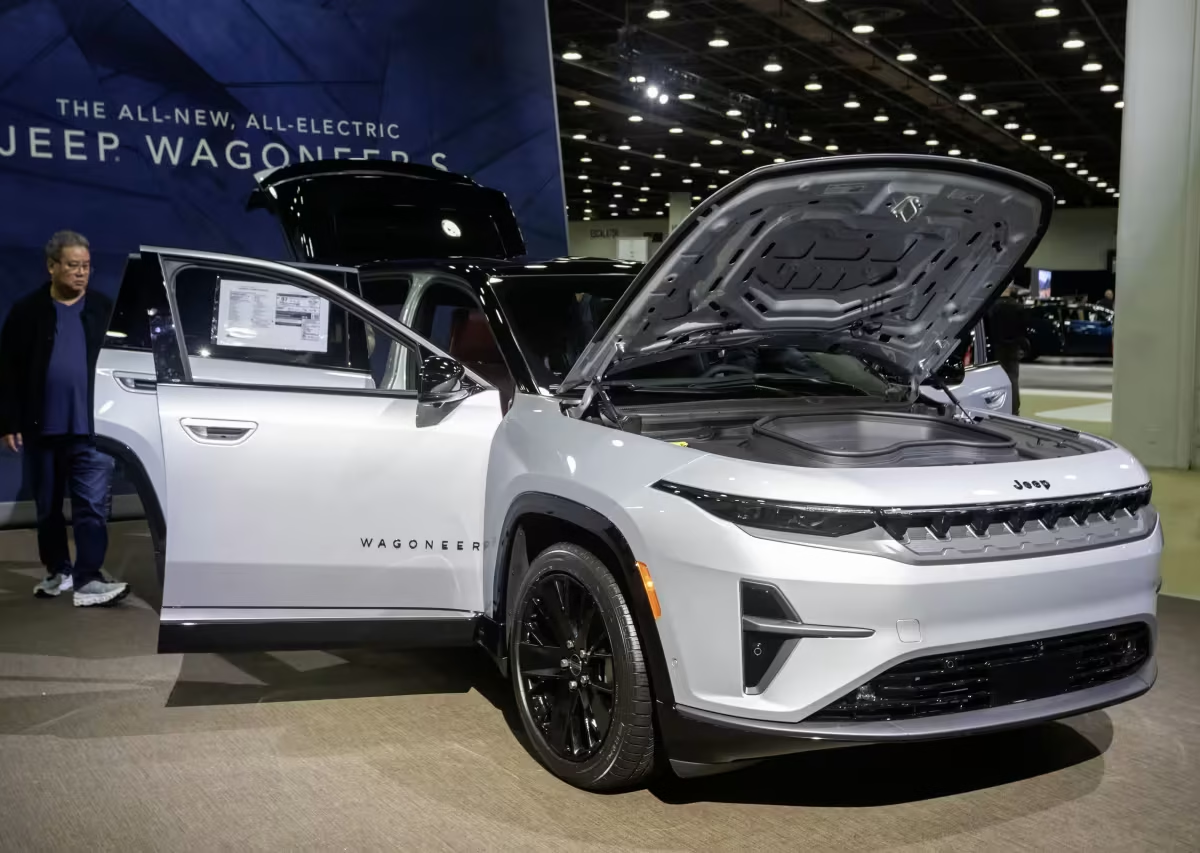Stellantis, the global automotive giant formed from the merger of Fiat Chrysler Automobiles and PSA Group, is making waves with its latest initiative—reviving iconic American classic cars. The move has sparked excitement among automotive enthusiasts and industry experts alike, as Stellantis aims to bring back some of the most beloved models from brands like Dodge, Chrysler, and Jeep with modern updates.
The Vision Behind the Revival
The revival of American classic cars is part of Stellantis’ broader strategy to blend nostalgia with innovation. With the auto industry rapidly shifting toward electrification and sustainable mobility, the company sees an opportunity to reintroduce legendary vehicles while adapting them for modern consumers.
CEO Carlos Tavares has emphasized that Stellantis wants to honor the rich heritage of its American brands while keeping up with technological advancements. This means incorporating electrified powertrains, cutting-edge safety features, and modern design elements without losing the essence of what made these cars legendary in the first place.
In recent years, the demand for retro-styled vehicles with modern technology has been on the rise. Consumers are drawn to the charm and historical significance of classic models but also expect the convenience and efficiency of contemporary automotive engineering. Stellantis’ plan to merge these two worlds could give the company a significant competitive advantage in the market.
Which Classics Might Be Making a Comeback?
While Stellantis has not officially confirmed the full lineup, several rumors and insider reports suggest that the company is considering reviving the following American classics:
- Dodge Charger and Challenger – These muscle cars have a cult following, and Stellantis has hinted at an electrified future for them. A next-generation Charger with a high-performance electric drivetrain could redefine the muscle car segment.
- Chrysler 300 – Once a symbol of American luxury and power, the Chrysler 300 could be reimagined as a sophisticated EV sedan, taking on competitors like Tesla and Lucid Motors.
- Jeep Wagoneer and Grand Wagoneer Classic Editions – While Stellantis has already revived the Wagoneer nameplate, a special edition model with classic styling cues could further appeal to vintage SUV lovers.
- Plymouth Barracuda – Enthusiasts have long speculated about the return of the ‘Cuda. If Stellantis revives this legendary name, it could be positioned as a modern electric sports car.
- Dodge Viper – Although known for its monstrous V10 engine, a new Viper with an all-electric setup could appeal to a new generation of performance enthusiasts.
- Ram Dakota – The midsize truck market is growing, and a revived Dakota could give Stellantis a stronger position against competitors like the Ford Ranger and Chevrolet Colorado.
Electrification and Sustainability in Classic Revivals
One of the biggest challenges Stellantis faces in reviving classic cars is balancing performance with sustainability. The company has committed to a fully electrified future, meaning many of these revived models will likely come with hybrid or all-electric powertrains.
For example, the upcoming Dodge Charger EV prototype has already teased an all-electric muscle car experience with artificial exhaust sounds to mimic traditional V8 engines. Similarly, Chrysler’s Airflow concept showcases how the brand could transition into the luxury EV space while maintaining its American identity.
Stellantis has also announced aggressive sustainability targets, including cutting carbon emissions and increasing the production of electric vehicles (EVs). The revived classics will likely incorporate lightweight materials, improved aerodynamics, and enhanced battery technology to ensure they remain competitive in today’s market.
Additionally, the company’s focus on software-based vehicle experiences means that these classics could feature advanced infotainment systems, over-the-air updates, and autonomous driving capabilities—all while retaining their vintage charm.
The Market Response and Industry Impact
The announcement of Stellantis’ American classics revival has generated significant buzz among automotive enthusiasts and collectors. Many see it as an opportunity to preserve the legacy of American muscle and luxury cars while embracing the future of mobility.
Industry analysts believe that Stellantis’ approach could give it an edge over competitors like General Motors and Ford, both of which have also been leveraging their heritage brands for modern reinventions. The success of vehicles like the Ford Bronco and Chevrolet Camaro shows that there is strong consumer demand for modernized classics.
Moreover, the growing interest in EVs and government incentives for electrification could further boost the market potential of Stellantis’ revived classics. The combination of nostalgia, modern performance, and sustainability could attract both traditional car buyers and environmentally conscious consumers.
Stellantis is also expected to leverage its partnerships and technological advancements to improve the efficiency of its EV platforms. The company’s STLA Large and STLA Frame architectures, designed for electrified performance vehicles and trucks, could serve as the foundation for these revived models.
Challenges Stellantis Faces
Despite the excitement surrounding Stellantis’ revival of classic American cars, the company faces several challenges:
- Balancing Tradition and Innovation – While modern technology is essential, Stellantis must ensure that the revived classics retain their original appeal. Fans expect vehicles that capture the spirit of the originals, not just nameplate reboots.
- Affordability and Market Positioning – High-performance EVs can be expensive, and Stellantis must find a way to offer competitive pricing while maintaining the quality and performance expected from these models.
- Regulatory Compliance – Stricter emissions and safety regulations may impact how these classic models are redesigned. Stellantis will need to navigate these rules while staying true to the legacy of each vehicle.
- Competing with Established EV Brands – Tesla, Rivian, and other EV-focused automakers have already captured significant market share. Stellantis must position its revived classics as viable alternatives to these brands.
The Future of Stellantis’ American Classics

As Stellantis moves forward with its American classics revival, the company is likely to unveil concept versions of these models in the coming years. Some may debut as limited-production vehicles, while others could become full-scale production models integrated into Stellantis’ long-term strategy.
Additionally, consumer response to these revivals will play a crucial role in determining their success. If the demand is strong, Stellantis may expand its lineup of revived classics, potentially bringing back even more legendary nameplates.
Final Thoughts
Stellantis’ decision to revive American classic cars is a bold yet strategic move that taps into the deep-rooted passion for automotive heritage. By modernizing these icons with electrified powertrains and innovative technology, the company is positioning itself as both a guardian of the past and a pioneer of the future.
While challenges remain, the potential rewards are immense. If Stellantis executes its strategy effectively, it could set a new benchmark for how automakers can honor their past while embracing the future of mobility. As more details emerge, car enthusiasts and industry watchers alike will be eagerly anticipating the return of these legendary models.
Trump’s Crypto Executive Order: What It Means for the Industry






